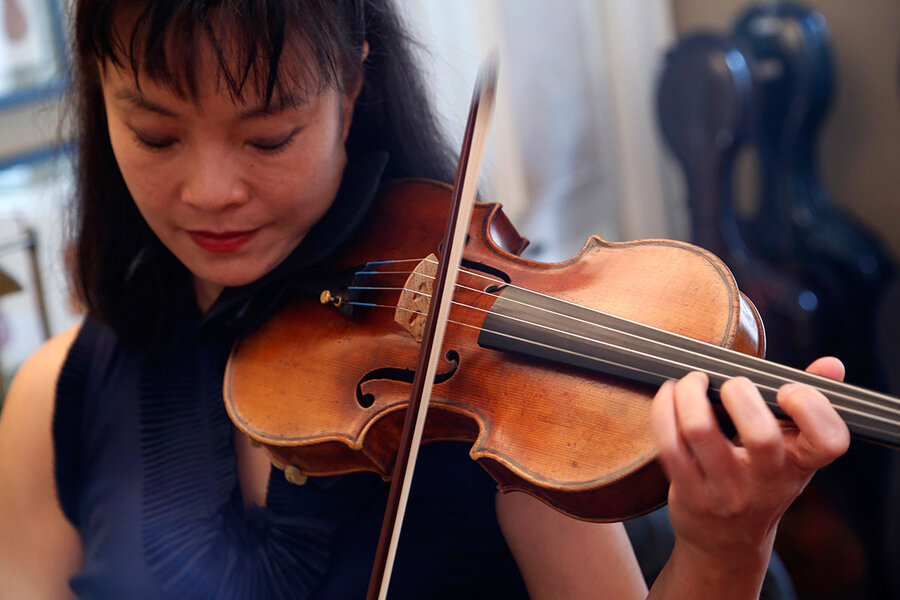Stradivarius violin recovered from 1980 theft heard in concert for first time
Loading...
A Stradivarius violin, stolen nearly 40 years ago from famed violinist Roman Totenberg, has made a triumphant return in a private Manhattan concert, played by Mr. Totenberg's former pupil, Mira Wang.
It's the first time the "Ames" Stradivarius – named after a violinist who once owned the instrument – has been heard since the instrument vanished after a 1980 concert in Cambridge, Mass. Totenberg, who called the violin his "musical partner of 38 years," suspected the thief to be Philip Johnson, a younger violinist he'd met earlier.
Ultimately, Totenberg's suspicions were proved correct, but he never lived to see the violin returned.
"It has such a different sound than most violins, it's so rich and so deep, and it gave the three of us the feeling that our father was present in the room with us again tonight," said Jill Totenberg, who attended the concert with her sisters, Nina Totenberg and Amy Totenberg. (Nina Totenberg is the legal affairs correspondent for National Public Radio.)
The instrument was actually returned to the family in 2015, after Mr. Johnson's wife had the violin examined by experts after her husband's death in 2011. She then turned the violin, which is worth millions of dollars, over to the FBI. Once the investigation was completed, Preet Bharara, then the US Attorney in Manhattan, returned the instrument to the Totenberg family.
"All three of us are so excited that it's back, it's in one piece and it plays," said Jill Totenberg.
The Ames violin was made in Italy in 1734. Like other extant Stradivarius violins, it is often viewed as having superior sound quality compared to other instruments. Antonio Stradivari (1644-1737), the maker of the violin, has remained famous over the centuries for the craftsmanship of his stringed instruments, especially violins. During a time when violin design was not nearly as standardized as it is today, his instruments stood out from the crowd, becoming a new standard that violinmakers have been attempting to imitate for hundreds of years.
All sorts of potential explanations have been put forward to explain the unique sound of a Stradivarius violin, from the shape of the violin to the unique type of maple wood used in the old instruments.
Some experts, however, say that the superior tone quality of a Stradivarius is a myth propagated by the high cost and fame of the old instruments, at least compared to modern violins. A recent study found that in a blind play-off between three modern violins, two Stradivarius instruments, and one Guarneri (instruments by another famous ancient violin-maker), only 8 of 21 violinists choose one of the older violins as their preferred instrument compared to high-quality modern examples.
Of course, some criticized the study's methods, with violinist Earl Carlyss dismissing the study because of the location of the tests: a hotel room, where he said the acoustics were likely unfavorable.
"The modern instruments are very easy to play and sound good to your ear, but what made the old instruments great was their power in a hall," he told The New York Times.
But regardless of whether the Stradivarius sound is in the wood, the shape, or in the mind, it cannot be denied that violinists who play the instruments form a very personal bond with the instrument. And that can make all the difference for a musician, says Ms. Wang.
Losing the Ames Stradivarius was "like if someone took your arm, just for fun, and never returned it," she says, and playing it again in a concert after nearly 40 years "is like discovering a sleeping beauty."
The Totenberg family says it plans to sell the instrument when they find the right sponsor or performer who can ensure that the violin will be once again be heard by the public.
This article contains material from the Associated Press.






